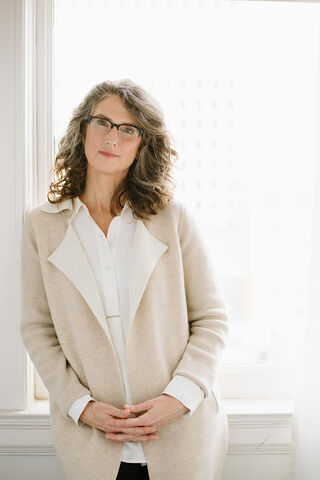Dementia
How the Arts Can Reshape Dementia Care
Artist Anne Basting explains how to connect to people with dementia.
Posted December 8, 2020

As a child, Anne Basting visited her grandmother’s nursing home. “Haunting” is the word that reliably comes to mind when she describes it. Yet in the decades following that childhood visit, Basting’s work has helped to transform facilities like that one. As an artist and scholar, she has infused art into dementia and elder care, leveraging song, dance, improvisation, and theater to elicit communication and joy. Her ideas have spread to care centers across the country and individual families hoping to forge meaningful connections with loved ones.
With a doctorate in theatre arts, Basting is an English professor at the University of Wisconsin-Milwaukee and founder of TimeSlips, a nonprofit devoted to storytelling. She was named a 2016 MacArthur Fellow and has written numerous books, including Creative Care: A Revolutionary Approach to Dementia and Elder Care. PT spoke with Basting about ways to reinvigorate relationships with loved ones who have dementia.
How did you realize that the arts could improve dementia care?
I always loved the arts, because they so fully enriched my life. I wanted to see if it was possible for the exercises I loved doing, that I had seen transform healthy older people, to work in an Alzheimer’s unit.
The first time I tried it, it really didn’t work, because I was focused on memory. But when I shifted to improvisation, everything changed. I brought in an image and I said, “Let’s make up a story. Anything you say, I’ll write down.” People began to play and express and sing in a way that felt like a miracle. It was emerging from total disconnection from life. They were present and sharing the gift of their imagination with me and with each other.
Can you give an overview of “creative care,” your approach to dementia and elder care?
Creative care is essentially the act of inviting another person into expression and meaning-making. It’s listening a story into existence and inviting that person to connect with you and with life. That’s the core of it. For people who have been shut down out of fear of saying the wrong thing, or because of disease, that invitation into meaning-making and expression can be a lifeline, an invitation back into the world.
Why is a more conventional conversation, focusing on memories or current events, the wrong approach?
When you’re engaging someone with memory loss, if you ask them to remember things, you’re asking them to go to the place of their loss to express themselves. It’s inviting the person into shame and failure. What creativity and imagination demand of us is to let go of that. Certainly memories come out, because you can’t completely separate memory and imagination. But if you let go of the expectation of memory, you open up so many more possibilities.
If you ask a person with memory loss, “Do you remember my name?” or “Do you remember when we went on that trip together?” there’s only one answer, and there’s only one pathway for that answer to travel in the brain. Nine times out of ten that pathway is broken. If instead you invite the person into the moment, and ask them an open-ended question, there are a thousand possible answers and a thousand possible pathways for that answer to travel. You open the opportunity and possibility for connection and expression.
We’ve grown so uncomfortable or distant from our inner creative capacity that people stop themselves from using the arts and imagination as a language. That’s essentially what we’re doing, teaching people creative confidence.
Why are we so resistant to allowing imagination and flexibility into communication?
In Western culture, memory is identity, and individual identity is everything. We protect the boundary of people’s ability to control memory as the boundaries of their identity. You feel as though if you lose memory, you lose identity. From the caregiving side, we try to erase the sense of loss, and repair the person by focusing on rebuilding their memory and identity for them, trying to preserve and protect them—which is great, but it’s also disconnecting.
A classic example is we’ll be working with people from an adult day program or assisted living and the adult child will say, “My father would never participate in this! He was very serious, and he’s not going to play this silly storytelling game.” Then they watch and the father sings and finds total joy in being funny, interacting with other people, and having the opportunity to play with language, connect, explore, and grow. People are afraid it’s undignified or childlike, but it couldn’t be further from that. It’s honoring what comes out of people and who they are right now.
What are examples of specific exercises that elicit expression, connection, and joy?
I love working in the micro-moments of the day, where you’re with someone and, in passing, look out the window and imagine something together. Or you ask what we call a “beautiful question,” an open-ended question, like “What is a beautiful sound in the world?” You can both answer and then try to make the sound. You create these micro-moments of joy and imagination.
I also love doing long-term projects like the “I Won’t Grow Up Project” in Kentucky. For two years, we did imagination-based creative engagement workshops around reimaging the story of Peter Pan with 12 rural nursing homes. We collaborated with staff, family, volunteers, residents, and artists and rebuilt that story into an immersive play that we put on with residents and invited the community to come experience. There’s nothing more powerful than experiencing a stigmatized place where nobody wants to go turned into a vibrant cultural center where people are clamoring for tickets. It makes you realize how fully separated arts and culture and healthcare have become. At the end of the day, my mission is to bring them solidly back together.
How can people at home put these ideas into practice?
Ask open-ended questions that give the keys to creative expression to that person. “What do you see?” “Where do you want to say this takes place?” Emphasize that there are no right answers, that they have imagination and control of the story themselves.
I once asked a gentleman who had no language left, “Can you show me how water moves?” He danced for about half an hour, showing how water moves. You don’t know what’s inside of people who have had the privilege of expression taken away from them until you try to open it up again.
You write in the book about your mother developing memory problems. Were there any moments when you leveraged your work in order to connect with her?
When we were at a big family dinner, I was sitting next to her and she turned to me and looked at me blankly, and said “Where’s Anne?” I was like, wow, there’s the moment I’ve coached hundreds of people through, of how not to push back against it, because the person doesn’t know that that hurts. So I paused. My sister Ellen had just gone to the bathroom so I said, “Do you mean Ellen? I think she went to the bathroom.” Then she looked at me and smiled and said, “You’re right there.” And I said, “Yes! I’m going to be right here and I love you.” Even in the hardest moment there is, when the person doesn’t know you, you can still be present and let them know that the love between you is there.
How does this approach help caregivers, like yourself?
One of the other shifts to create shared moments of meaning—besides the shift from memory to imagination—is the shift away from “I’m doing this for you” to it being mutually beneficial. This process nurtures both sides of the care partnership so that you can feel yourself receiving the gift of someone’s imagination and the gift of opening the door for someone to walk through to meet you through imagination. It’s nurturing in both directions.
We know from psychological research that creativity and generosity reduce stress and improve well-being, and when you put those together in a caregiving situation, which can be very stressful, both sides of the care partnership feel better.




